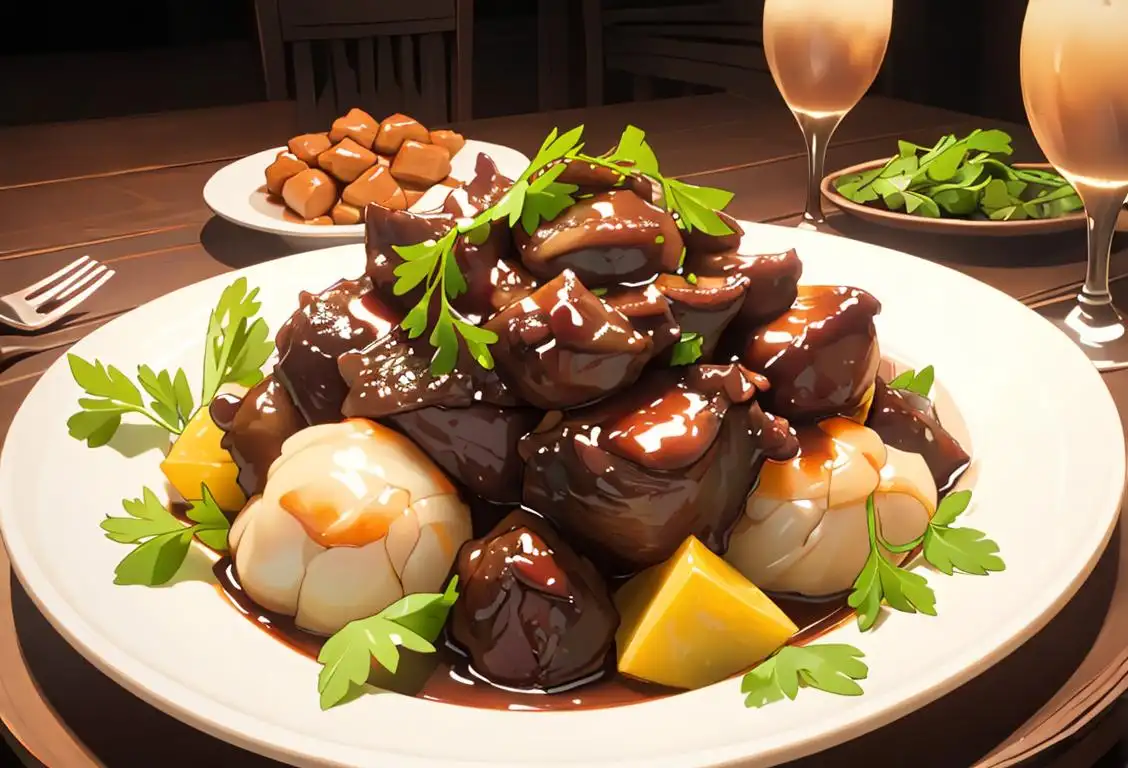National Oxtail Day

Happy National Oxtail Day! Get your taste buds ready for a treat like no other as we dive into the rich and flavorful world of oxtail cuisine. This is a day to celebrate the tender and succulent meat that comes from the tail of a cow. Prepare yourself for a mouthwatering adventure that will leave you wanting more!
When is Oxtail Day?
It's national oxtail day on the 26th January.
The History of National Oxtail Day
National Oxtail Day may seem like a relatively new addition to the ever-expanding list of quirky celebrations, but its roots go much deeper. The love for oxtail dates back centuries when it was a popular dish amongst the royals and nobles. As time went on, it made its way to the tables of everyday people, becoming a beloved comfort food around the world.
In recent years, the internet has played a significant role in spreading awareness and appreciation for oxtail. Food bloggers, recipe websites, and social media influencers have showcased creative ways to use oxtail in various cuisines, elevating its status from a humble ingredient to a foodie favorite.
National Oxtail Day, established to honor this delectable dish, provides an opportunity for food enthusiasts to celebrate and explore the endless possibilities of oxtail recipes.
How to Celebrate National Oxtail Day
There are countless ways you can join in on the celebrations for National Oxtail Day. Here are a few ideas to get you started:
- Try a New Recipe: Channel your inner chef and experiment with different oxtail recipes. From hearty stews to savory braised dishes, there is no shortage of delicious options.
- Host an Oxtail Feast: Invite friends and family over for an oxtail-themed dinner party. Prepare a variety of dishes and let everyone indulge in the delightful flavors.
- Support Local Restaurants: Visit your favorite local restaurant known for their exceptional oxtail dishes. Show your support and let the professionals do the cooking for you.
Did You Know?
Oxtail is a part of traditional cuisine in many cultures around the world, including Jamaican, Chinese, Korean, and Italian. Each culture has its own unique approach to cooking oxtail, resulting in a diverse range of flavors and preparations.
History behind the term 'Oxtail'
14th century
Origins in Medieval Europe
Oxtail, also known as 'queue de boeuf' in French, has its origins in Medieval Europe. During this time, oxtail was a popular ingredient in stews and soups, not only for its rich flavor but also for its gelatinous texture. The tail of an ox was seen as a less desirable cut of meat and was often reserved for commoners or used to feed servants.
17th century
Introduction to West Africa
In the 17th century, oxtail made its way to West Africa through the transatlantic slave trade. African cooks began incorporating oxtail into their traditional cuisines, creating delicious and flavorful dishes. The use of oxtail in West African cooking soon spread throughout the region and became an integral part of their culinary culture.
19th century
Oxtail Soup Gaining Popularity
By the 19th century, oxtail soup had grown in popularity across Europe and North America. It became a staple dish in many households, especially during the colder months when a hearty, warming soup was particularly appealing. The long, slow cooking of oxtails allowed their collagen to break down, resulting in a rich, gelatinous broth that was both nourishing and comforting.
20th century
Oxtail in Fine Dining
In the early 20th century, oxtail started to make its way into fine dining establishments. Chefs recognized the unique flavor and texture that oxtail brought to dishes and began incorporating it into gourmet recipes. Oxtail became a symbol of culinary sophistication, served in elegant restaurants around the world.
Present day
Oxtail's Resurgence
In recent years, oxtail has experienced a resurgence in popularity as part of the nose-to-tail eating movement. As people embrace sustainable and ethical eating practices, they are rediscovering the deliciousness and versatility of oxtail. It is now celebrated as a delicacy in various cuisines around the globe, from traditional African and Caribbean dishes to modern interpretations in upscale restaurants.
Did you know?
Did you know that in Jamaican cuisine, oxtail is often marinated in a flavorful blend of spices and slowly simmered to tender perfection? The result is a dish so delicious, it will transport you straight to the sunny shores of the Caribbean!Tagged
food celebration tastyFirst identified
26th January 2017Most mentioned on
26th January 2017Total mentions
17Other days
Oxtail Day
Chili Day
Iced Tea Day
Martini Day
Pina Colada Day
Vodka Day
China Day
Pizza Party Day
Cheese Pizza Day
Chocolate Ice Cream Day








